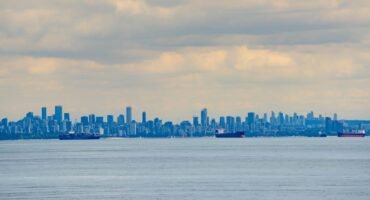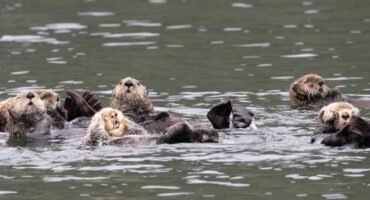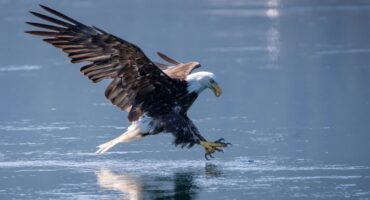
Landscapes of Svalbard
- Svalbard Photography Expedition
- How to Get to Svalbard (and what to do once you are there)
- Svalbard Photography Tour
- A Snowmobile Trip to East Svalbard
- Svalbard Photography Expedition on the M/V Freya
- Landscapes of Svalbard
- Harp Seals in the Sea Mist
- Falling in Love with the Arctic Walrus
- The Bearded Seal - A New Favourite
- Minke Whale Surprise
- Polar Bears (a.k.a. pixel bears)
- The Birds of Svalbard
- Reflections on Our Trip to Svalbard (and Svalbard Departure Tips)
Svalbard landscapes are a place of space, contrast, and silence. Mountains rise abruptly from the sea. Ice moves slowly, reshaping the coast over time. On still days, water mirrors the sky. On others, it disappears under a chaotic mosaic of floes. Svalbard is not a place of landmarks. It is a place of moods.
Glaciers in Svalbard Landscapes
Svalbard has over 2000 glaciers, covering about 60% of its land area. They don’t just sit in the background — they carve, crush, and slide into the sea. Some are jagged and blue. Others are smooth and white, flowing like frozen rivers into the fjords.

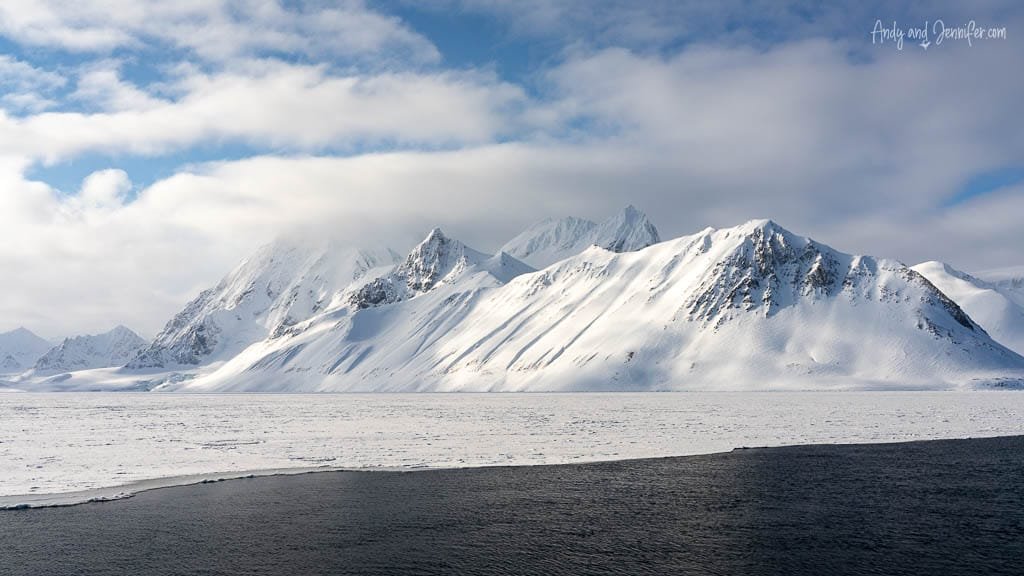
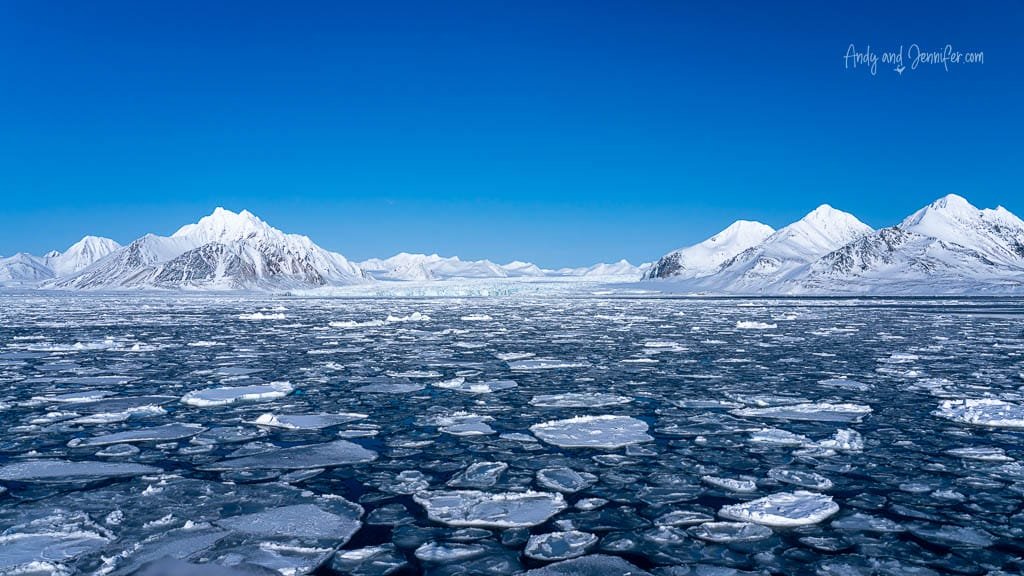
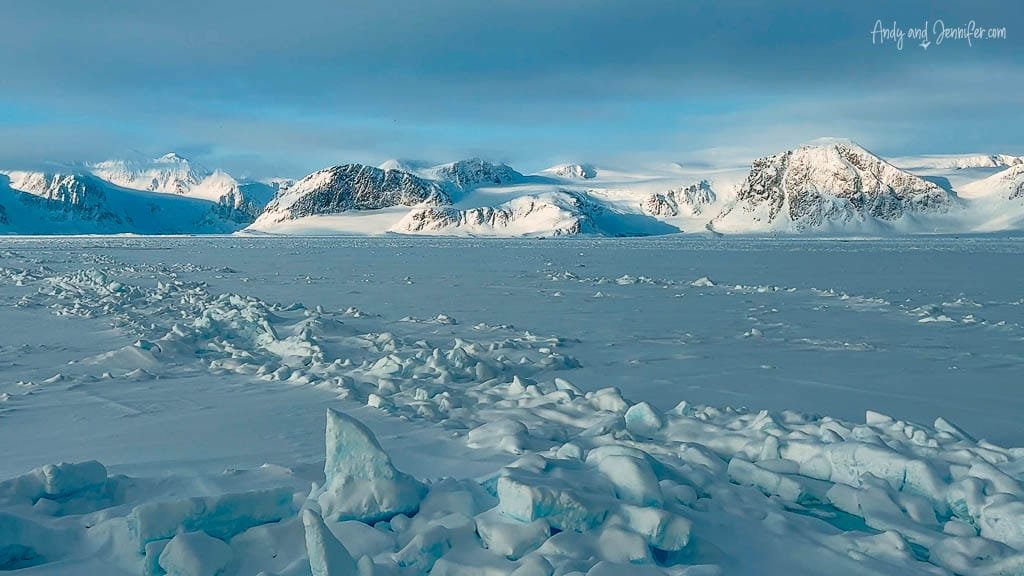
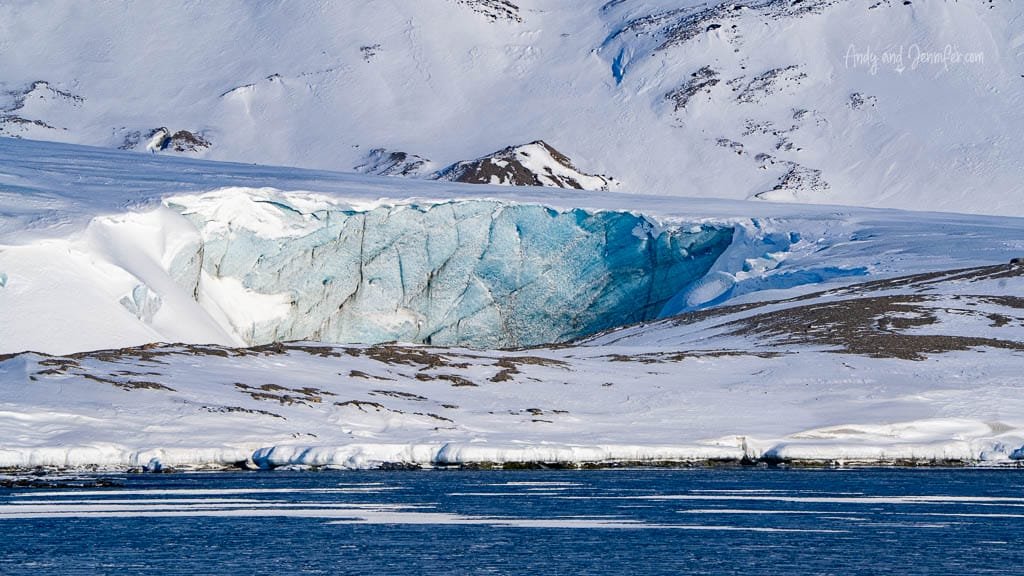
Stillness
There are moments when everything stops. No wind. No movement. Just ice stretching toward a soft horizon. These wide-open Svalbard landscapes feel almost blank — and then the details begin to emerge: cracks, texture, faint light gradients.
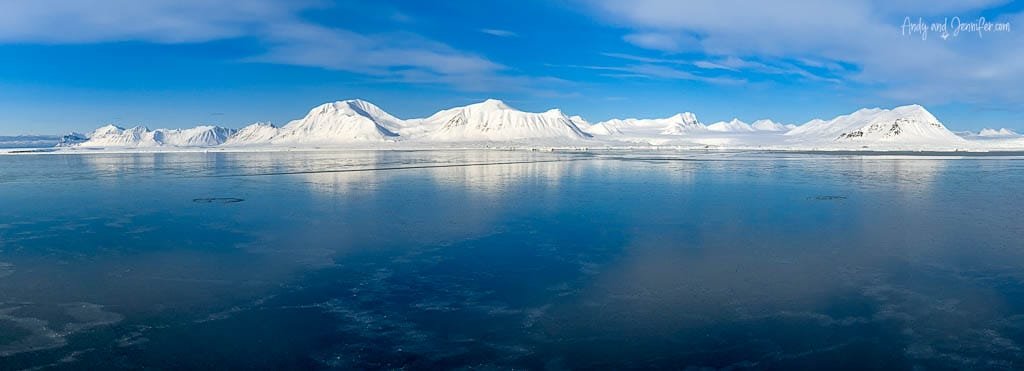

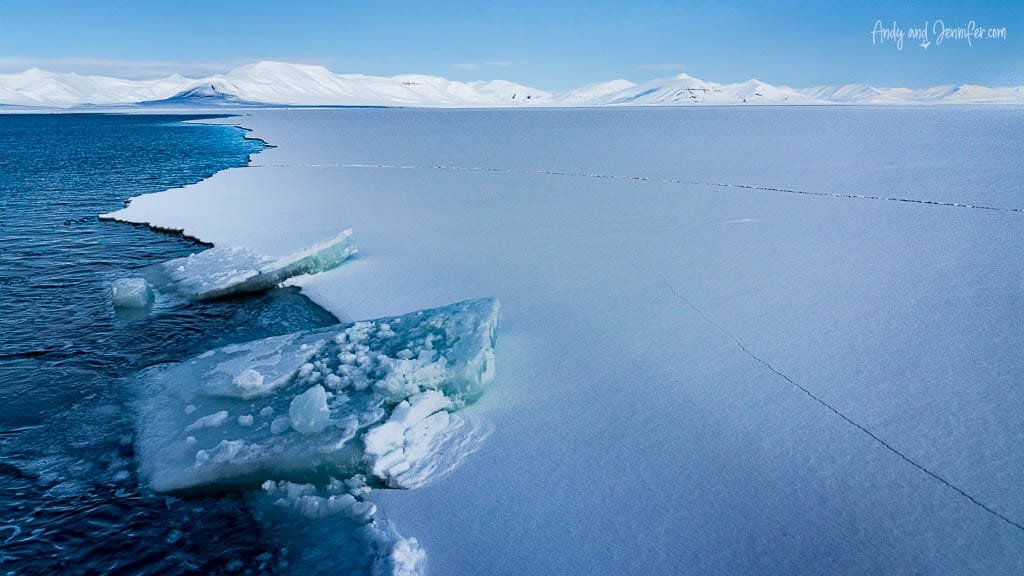
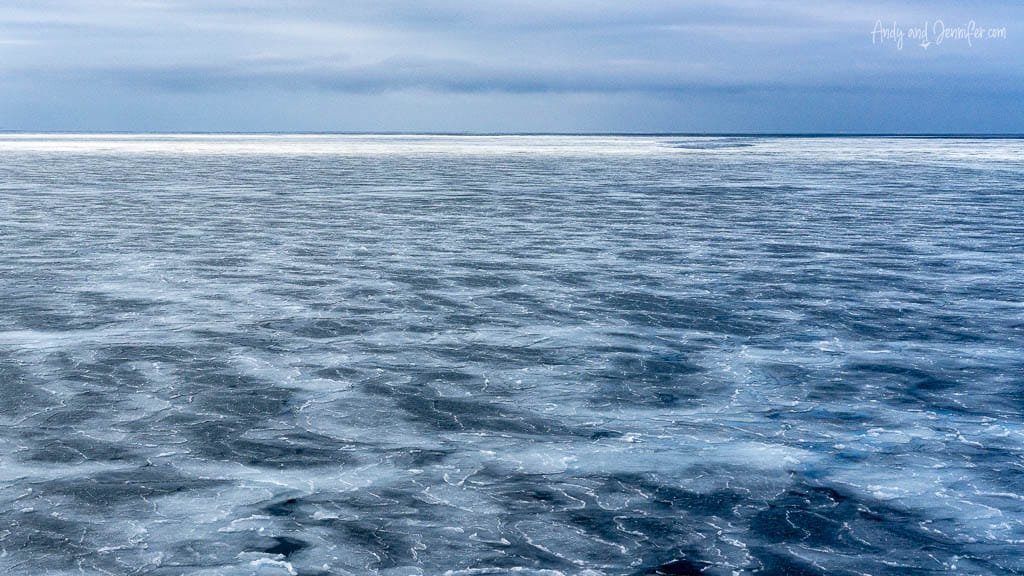
Reflections
On calm days, Svalbard doubles. Mountains appear again in the water. Sea ice floats in mirrored skies.
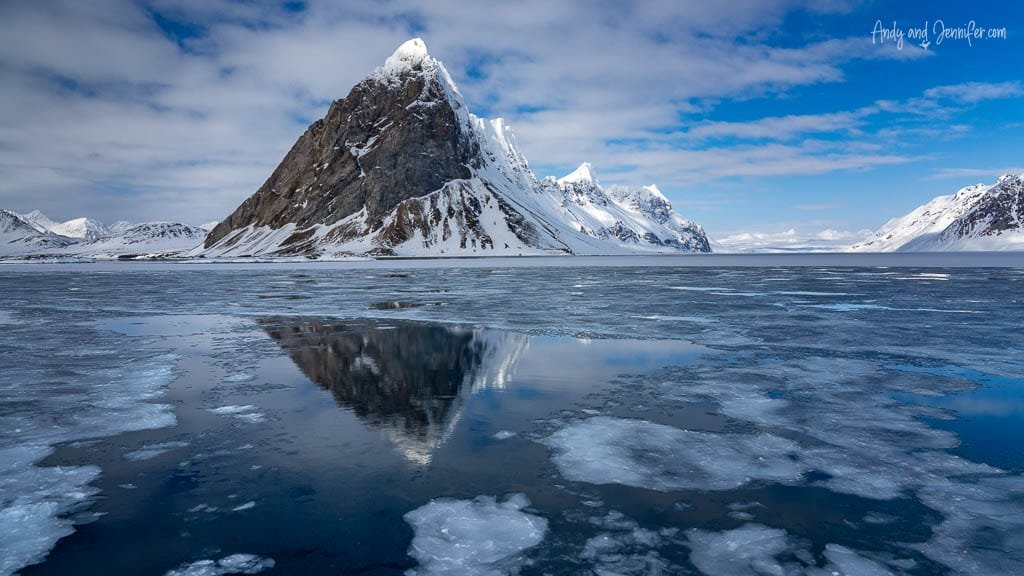
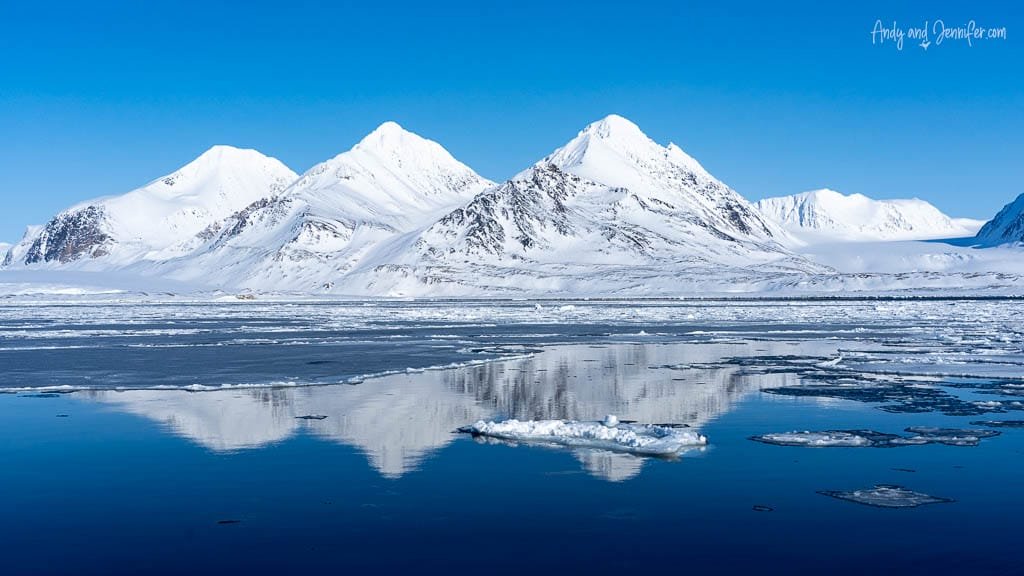
Footprints
And in the middle of nowhere — a line of footprints. At first, they look human. But there are no people walking around out here, and these would be very large feet. They belong to a polar bear, briefly out of the water and moving across the ice.
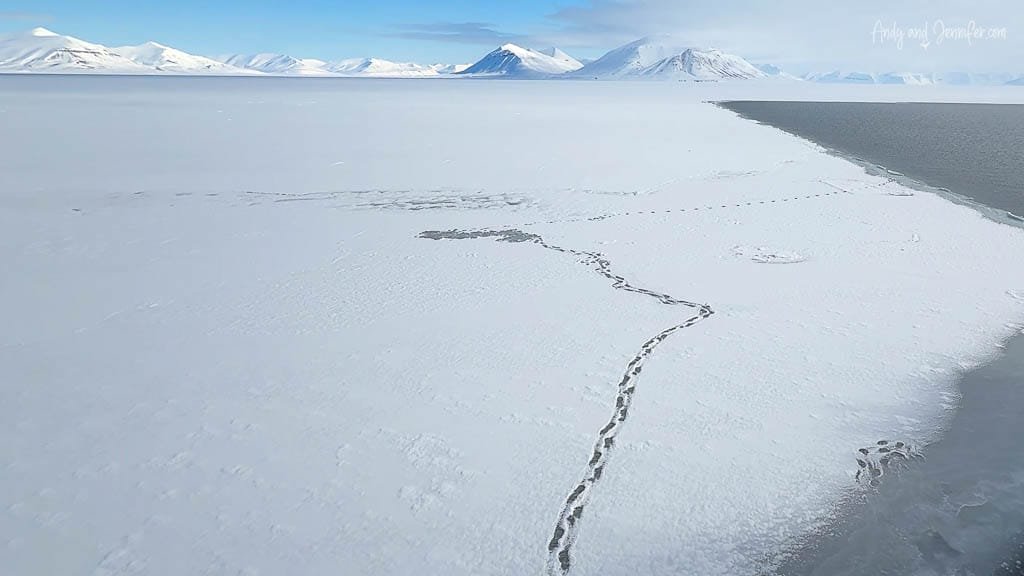
Mountains
The mountains here are sculptural. Some are black rock, streaked with snow. Others are undulating hillsides blanketed in white. They catch light differently depending on the weather — sometimes glowing, sometimes flat and grey.
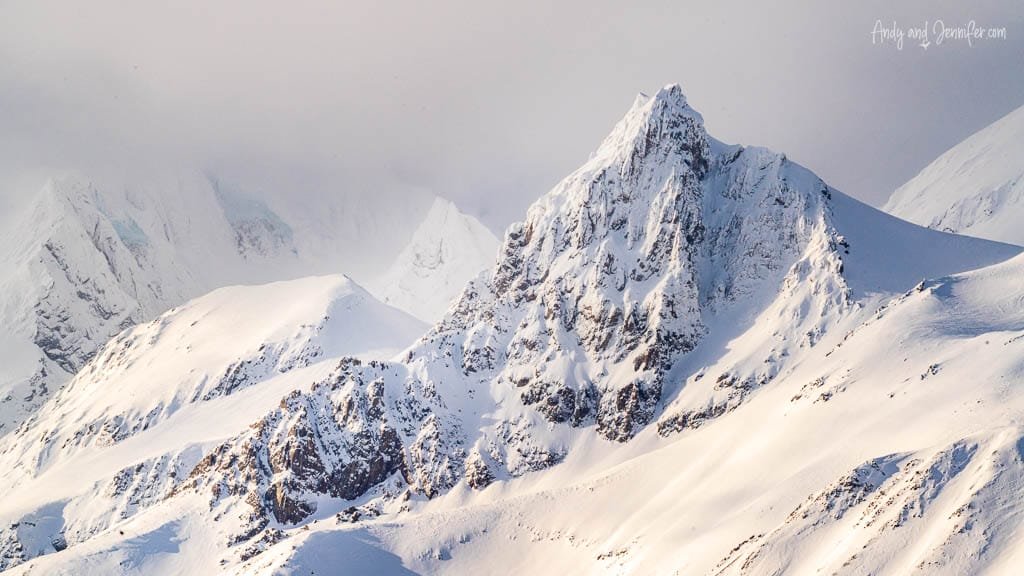
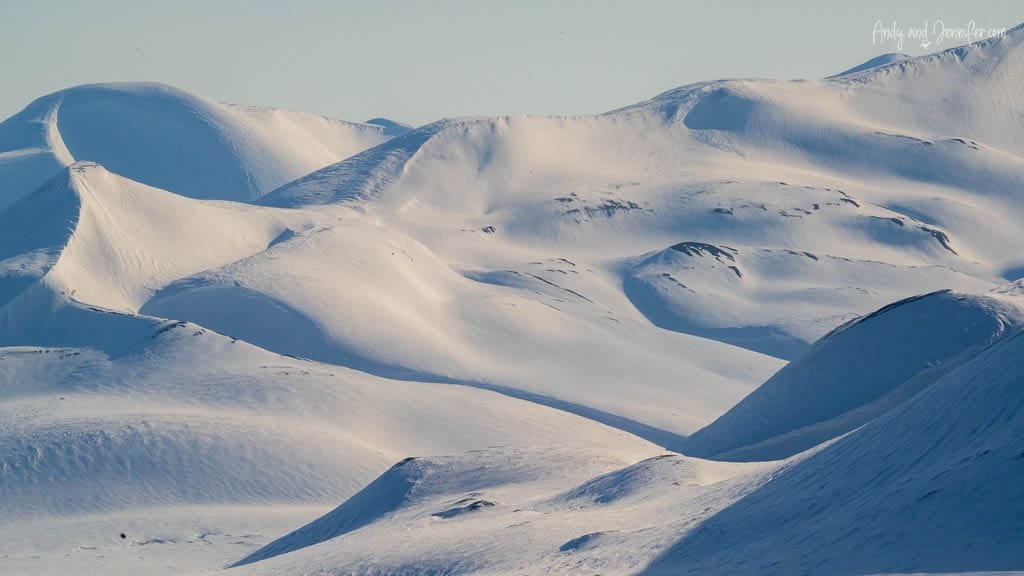
Abstracts Found in Svalbard Landscapes
Zoom into Svalbard landscapes, and the Arctic becomes something else entirely. Ice bubbles, fractured floes, soft snow curves, blue shadows. Sometimes the most interesting compositions are often the ones hiding in plain sight.
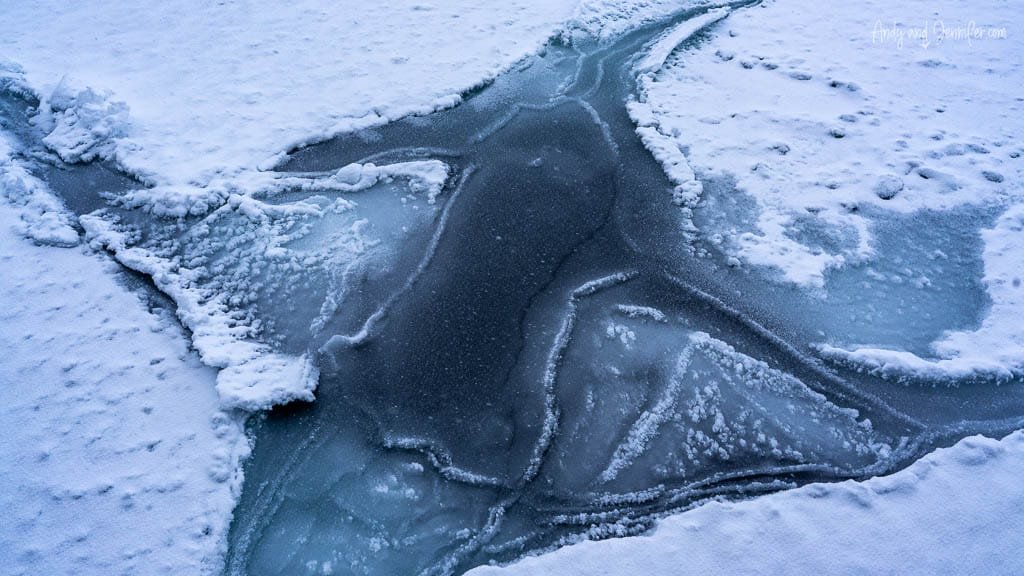
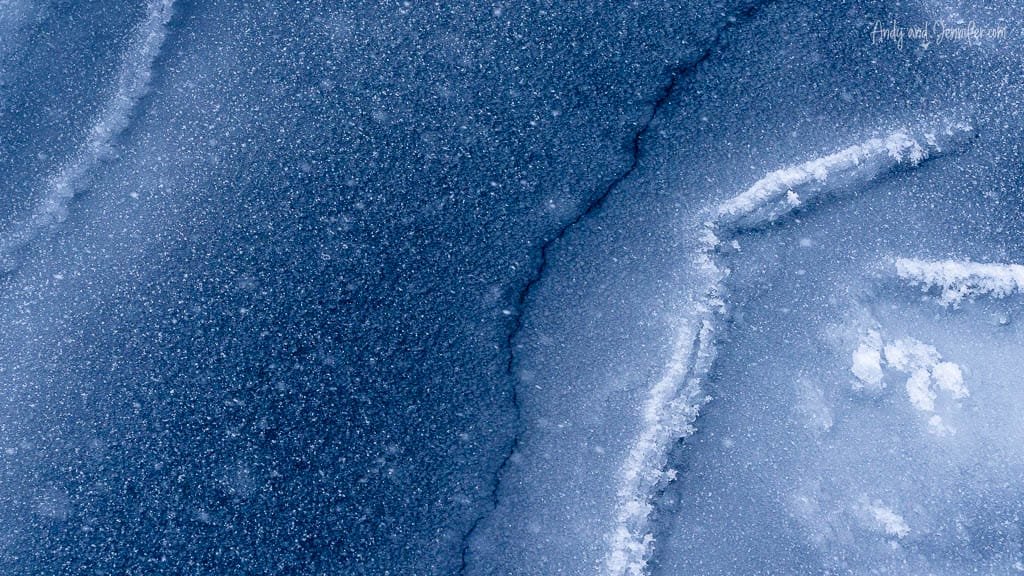
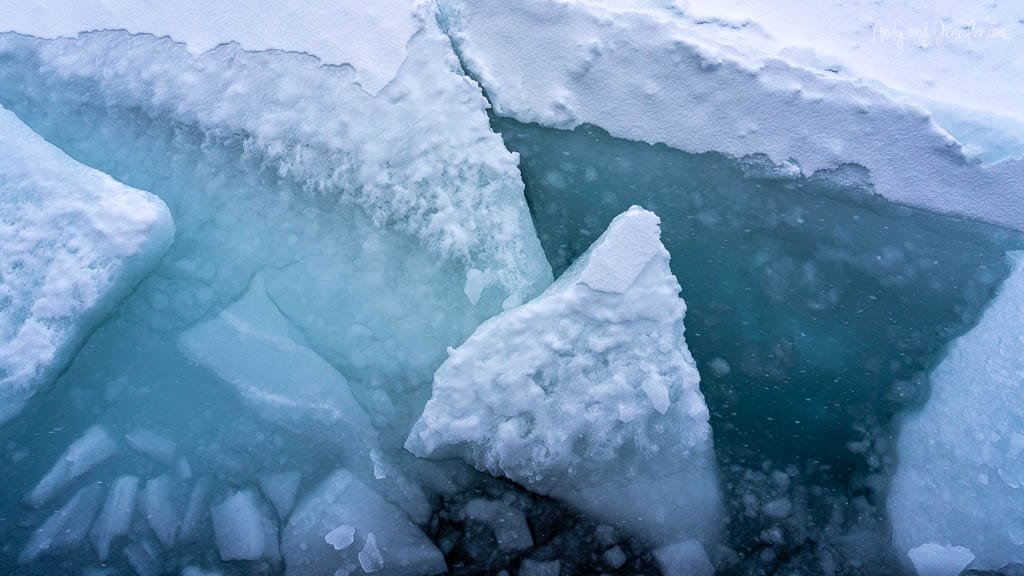
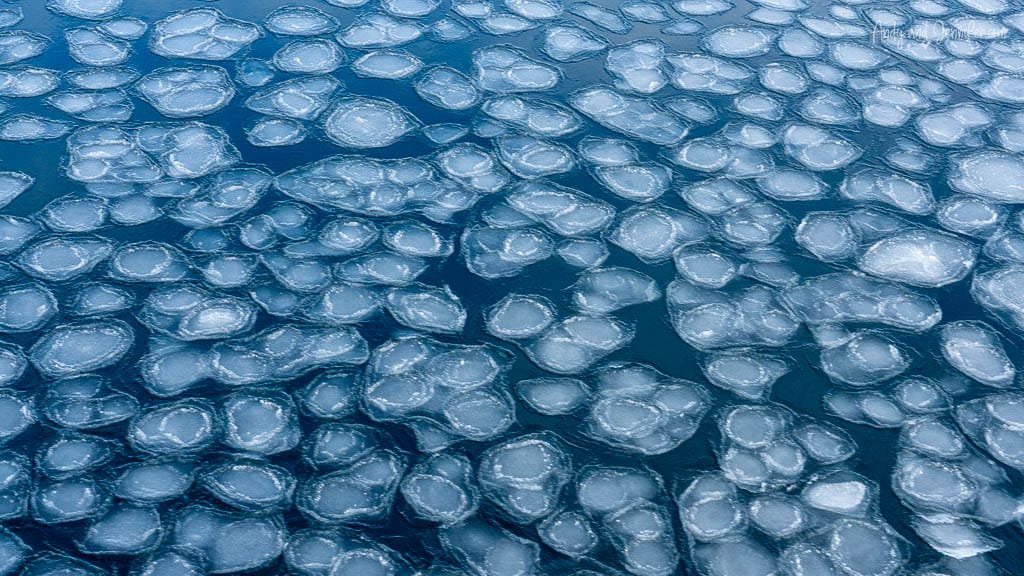
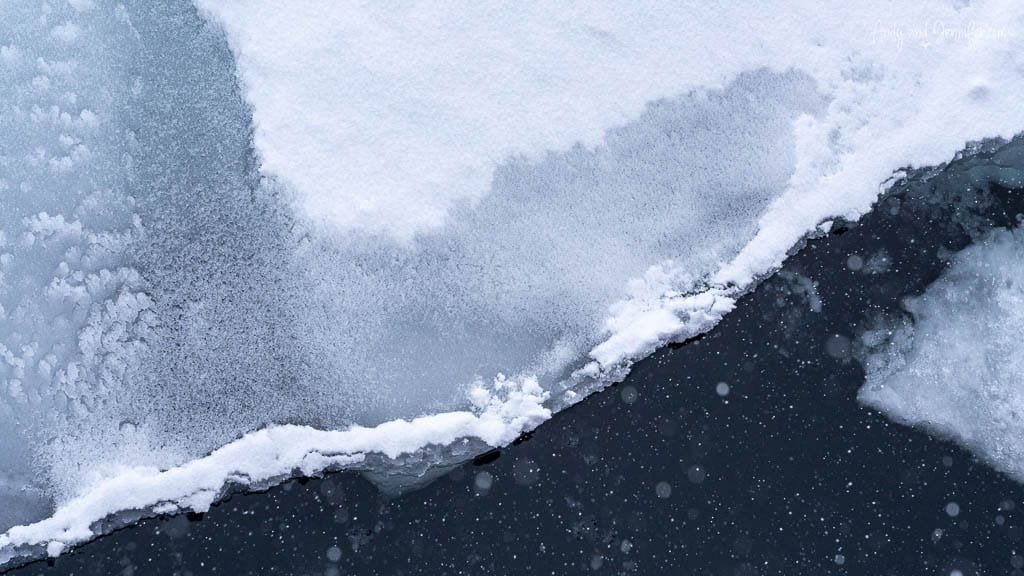
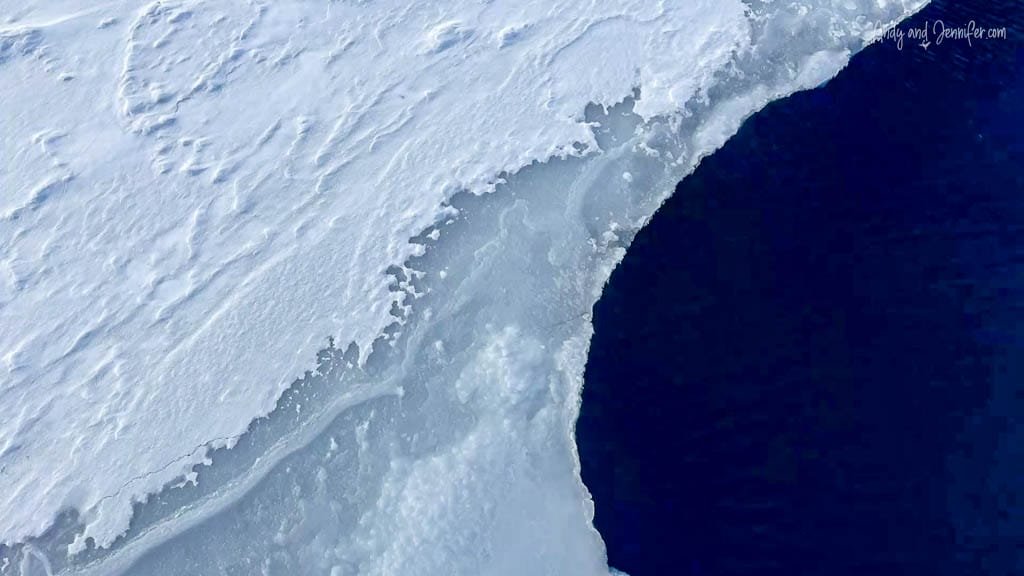
Early (or late?) Light
We traveled to Svalbard in “sunny winter“. In mid-April, the sun doesn’t fully set — but it dips low enough to cast long shadows and bring colour to the sky. Around 1 or 2 a.m., the light softens. Ice turns blue, then gold. Clouds reflect pink. It’s not quite night, not quite day — just a long, slow glow that settles over everything. We were fortunate to have a few nights with sun pillars, an atmospheric phenomenon caused by ice crystals suspended in the air, catching the low-angle light just right.


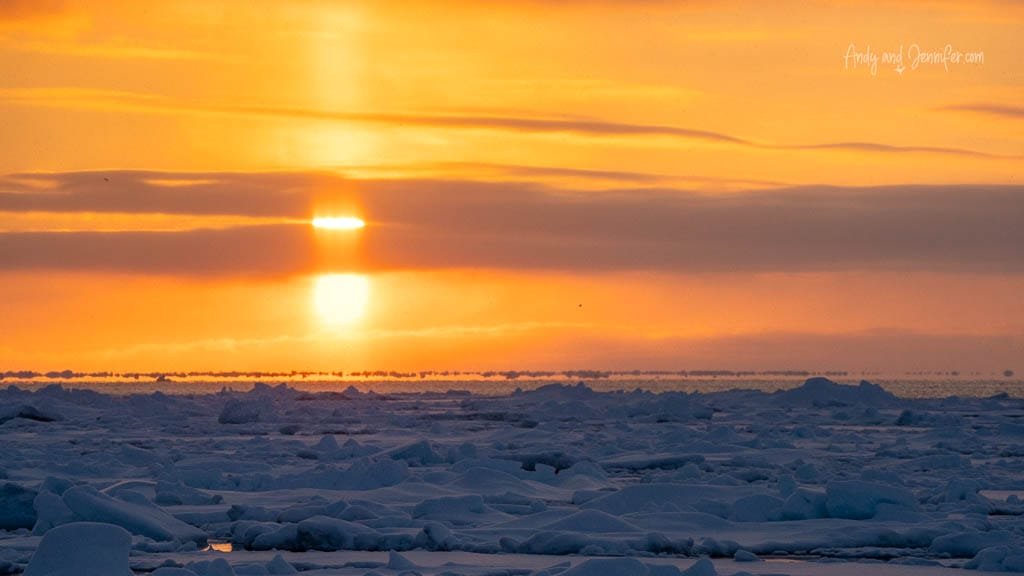
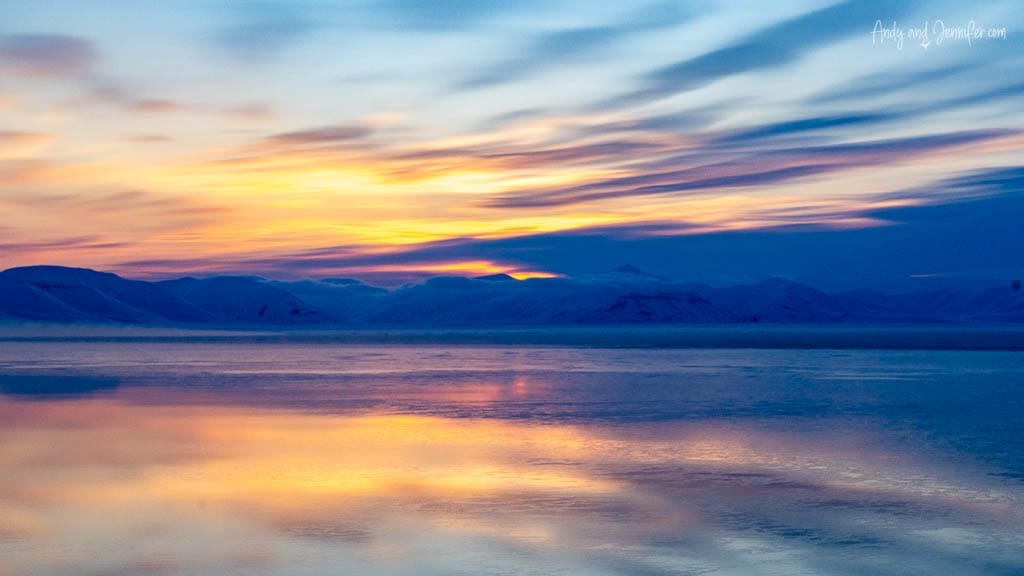
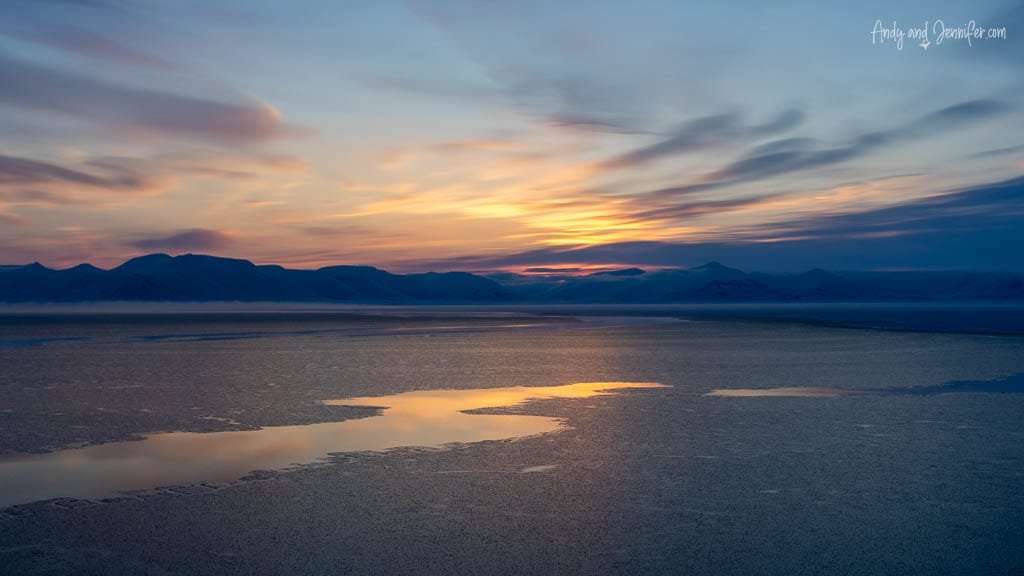
Next up — Harp Seals in the Sea Mist
We’re Andy and Jennifer—two former corporate executives who chose long ago to prioritise experiences over stuff while pursuing our passions for travel and photography. From the Arctic to Antarctica, and most places in between, we’ve captured the world through our lenses and love sharing those stories. Our careers gave us the means, but our purpose is inspiring others to explore and helping people create images they’re proud of.


